Chunbiao Zhu
Bi-Skip: A Motion Deblurring Network Using Self-paced Learning
Feb 24, 2019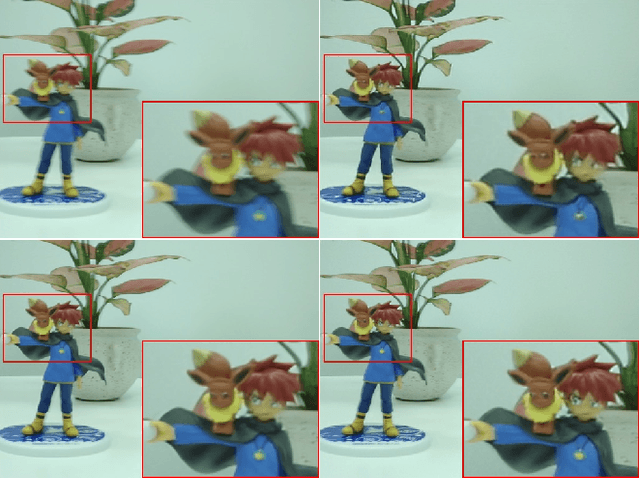


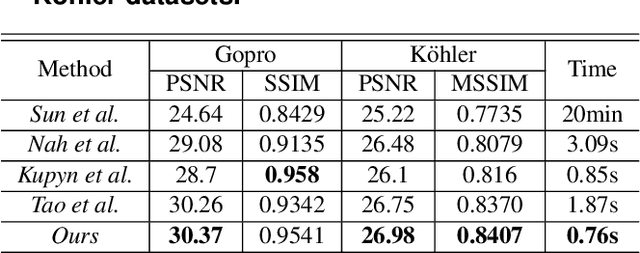
Abstract:A fast and effective motion deblurring method has great application values in real life. This work presents an innovative approach in which a self-paced learning is combined with GAN to deblur image. First, We explain that a proper generator can be used as deep priors and point out that the solution for pixel-based loss is not same with the one for perception-based loss. By using these ideas as starting points, a Bi-Skip network is proposed to improve the generating ability and a bi-level loss is adopted to solve the problem that common conditions are non-identical. Second, considering that the complex motion blur will perturb the network in the training process, a self-paced mechanism is adopted to enhance the robustness of the network. Through extensive evaluations on both qualitative and quantitative criteria, it is demonstrated that our approach has a competitive advantage over state-of-the-art methods.
PDNet: Prior-model Guided Depth-enhanced Network for Salient Object Detection
Oct 13, 2018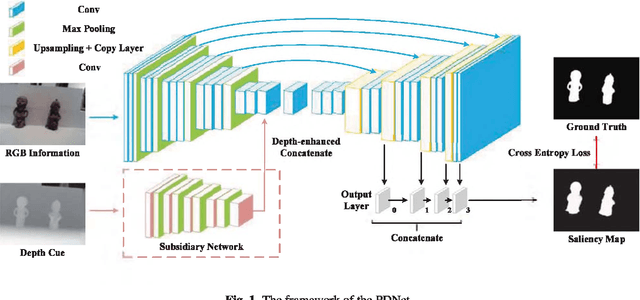
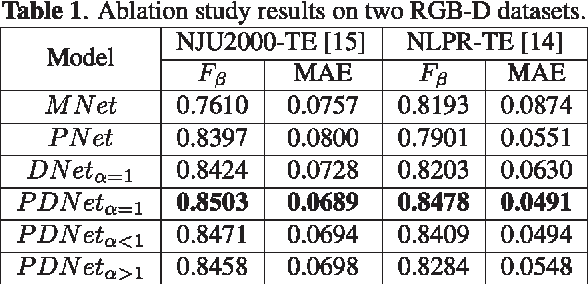

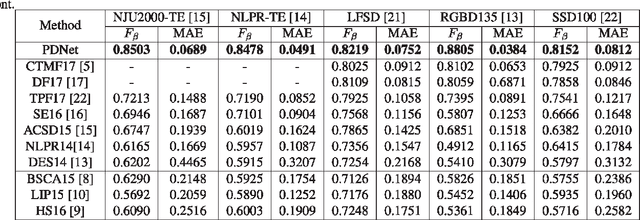
Abstract:Fully convolutional neural networks (FCNs) have shown outstanding performance in many computer vision tasks including salient object detection. However, there still remains two issues needed to be addressed in deep learning based saliency detection. One is the lack of tremendous amount of annotated data to train a network. The other is the lack of robustness for extracting salient objects in images containing complex scenes. In this paper, we present a new architecture$ - $PDNet, a robust prior-model guided depth-enhanced network for RGB-D salient object detection. In contrast to existing works, in which RGB-D values of image pixels are fed directly to a network, the proposed architecture is composed of a master network for processing RGB values, and a sub-network making full use of depth cues and incorporate depth-based features into the master network. To overcome the limited size of the labeled RGB-D dataset for training, we employ a large conventional RGB dataset to pre-train the master network, which proves to contribute largely to the final accuracy. Extensive evaluations over five benchmark datasets demonstrate that our proposed method performs favorably against the state-of-the-art approaches.
Exploiting the Value of the Center-dark Channel Prior for Salient Object Detection
May 14, 2018
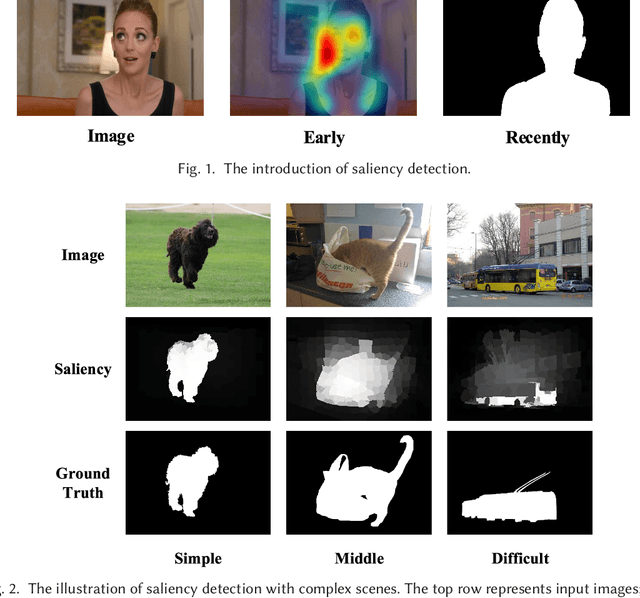
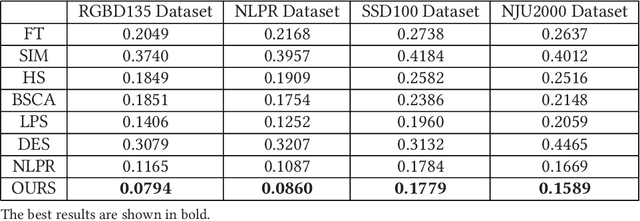
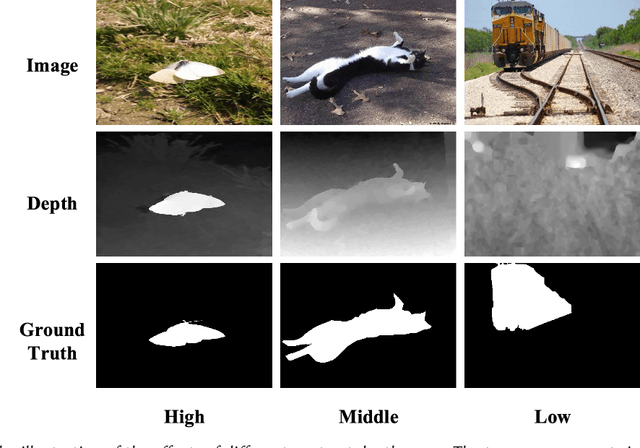
Abstract:Saliency detection aims to detect the most attractive objects in images and is widely used as a foundation for various applications. In this paper, we propose a novel salient object detection algorithm for RGB-D images using center-dark channel priors. First, we generate an initial saliency map based on a color saliency map and a depth saliency map of a given RGB-D image. Then, we generate a center-dark channel map based on center saliency and dark channel priors. Finally, we fuse the initial saliency map with the center dark channel map to generate the final saliency map. Extensive evaluations over four benchmark datasets demonstrate that our proposed method performs favorably against most of the state-of-the-art approaches. Besides, we further discuss the application of the proposed algorithm in small target detection and demonstrate the universal value of center-dark channel priors in the field of object detection.
Automatic Salient Object Detection for Panoramic Images Using Region Growing and Fixation Prediction Model
Apr 10, 2018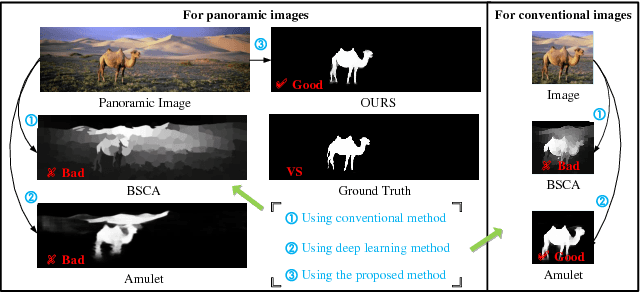
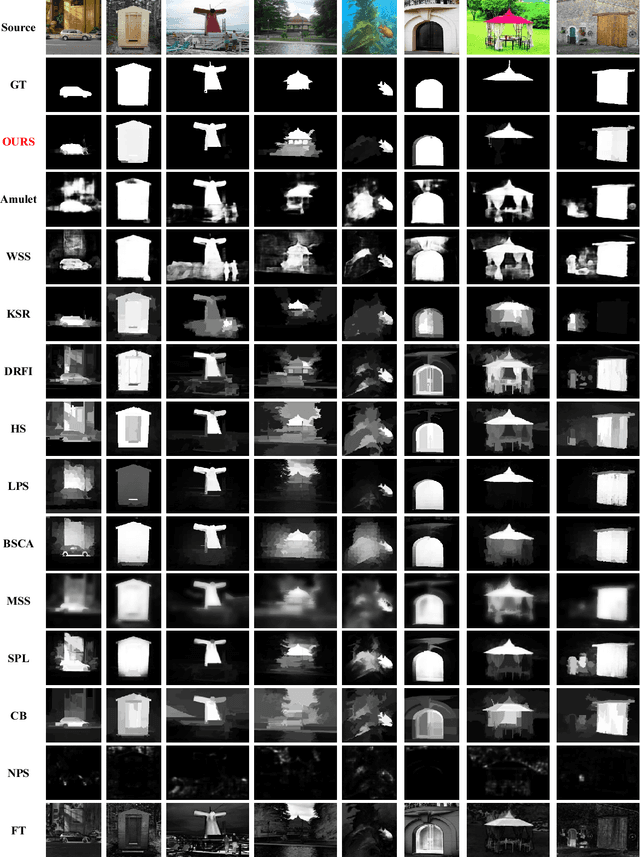

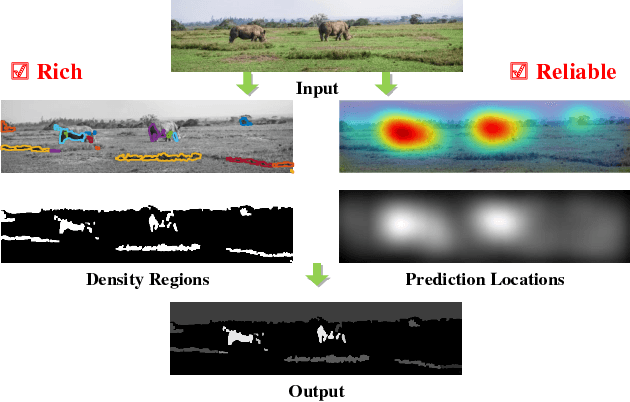
Abstract:Almost all previous works on saliency detection have been dedicated to conventional images, however, with the outbreak of panoramic images due to the rapid development of VR or AR technology, it is becoming more challenging, meanwhile valuable for extracting salient contents in panoramic images. In this paper, we propose a novel bottom-up salient object detection framework for panoramic images. First, we employ a spatial density estimation method to roughly extract object proposal regions, with the help of region growing algorithm. Meanwhile, an eye fixation model is utilized to predict visually attractive parts in the image from the perspective of the human visual search mechanism. Then, the previous results are combined by the maxima normalization to get the coarse saliency map. Finally, a refinement step based on geodesic distance is utilized for post-processing to derive the final saliency map. To fairly evaluate the performance of the proposed approach, we propose a high-quality dataset of panoramic images (SalPan). Extensive evaluations demonstrate the effectiveness of our proposed method on panoramic images and the superiority of the proposed method against other methods.
A multilayer backpropagation saliency detection algorithm and its applications
Mar 26, 2018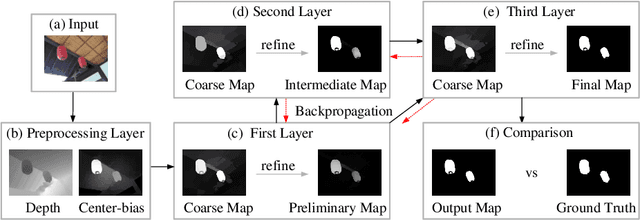



Abstract:Saliency detection is an active topic in the multimedia field. Most previous works on saliency detection focus on 2D images. However, these methods are not robust against complex scenes which contain multiple objects or complex backgrounds. Recently, depth information supplies a powerful cue for saliency detection. In this paper, we propose a multilayer backpropagation saliency detection algorithm based on depth mining by which we exploit depth cue from three different layers of images. The proposed algorithm shows a good performance and maintains the robustness in complex situations. Experiments' results show that the proposed framework is superior to other existing saliency approaches. Besides, we give two innovative applications by this algorithm, such as scene reconstruction from multiple images and small target object detection in video.
Robust Saliency Detection via Fusing Foreground and Background Priors
Nov 01, 2017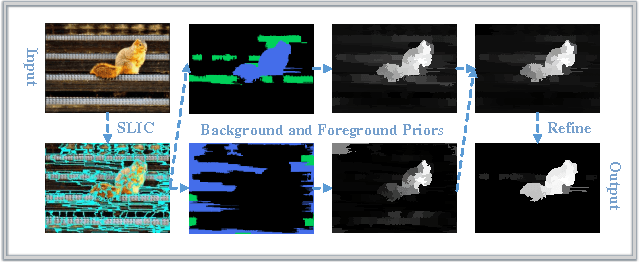

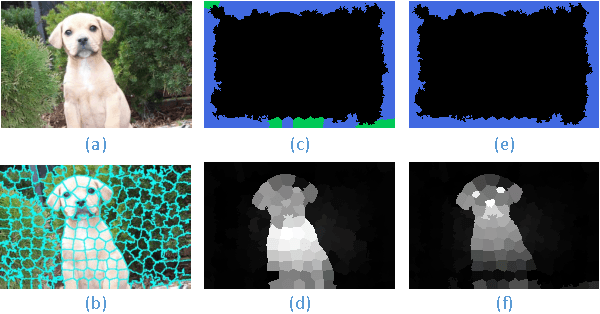
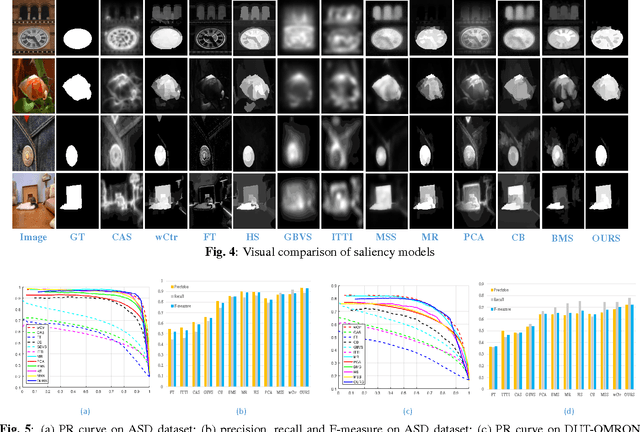
Abstract:Automatic Salient object detection has received tremendous attention from research community and has been an increasingly important tool in many computer vision tasks. This paper proposes a novel bottom-up salient object detection framework which considers both foreground and background cues. First, A series of background and foreground seeds are selected from an image reliably, and then used for calculation of saliency map separately. Next, a combination of foreground and background saliency map is performed. Last, a refinement step based on geodesic distance is utilized to enhance salient regions, thus deriving the final saliency map. Particularly we provide a robust scheme for seeds selection which contributes a lot to accuracy improvement in saliency detection. Extensive experimental evaluations demonstrate the effectiveness of our proposed method against other outstanding methods.
 Add to Chrome
Add to Chrome Add to Firefox
Add to Firefox Add to Edge
Add to Edge